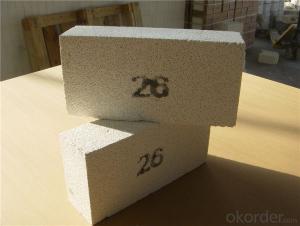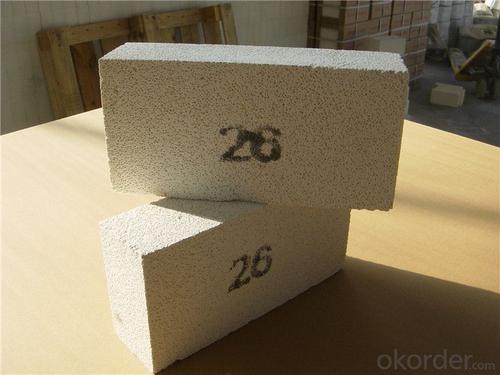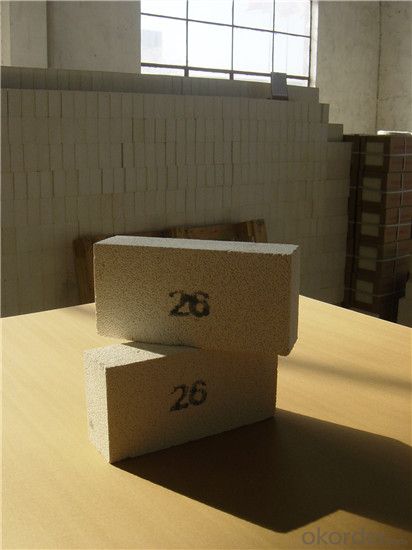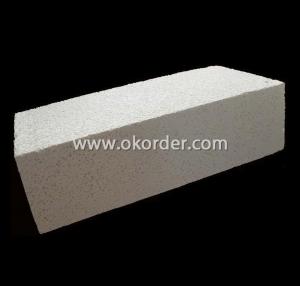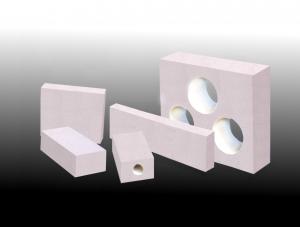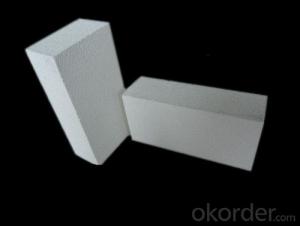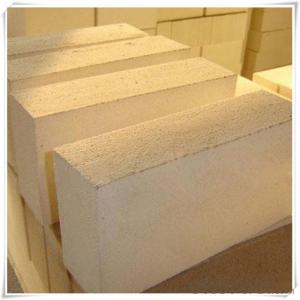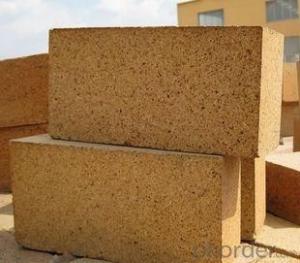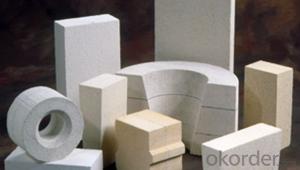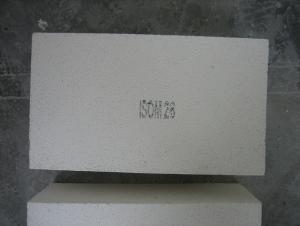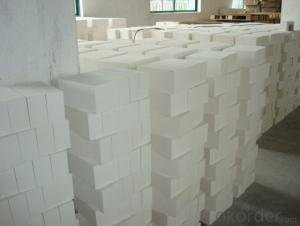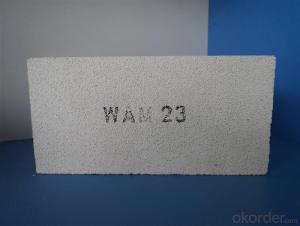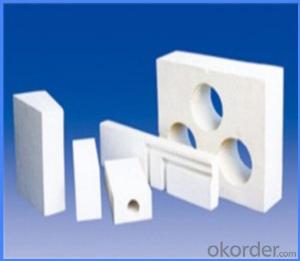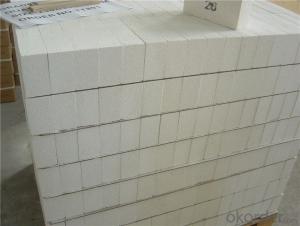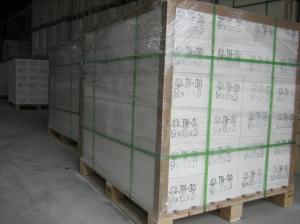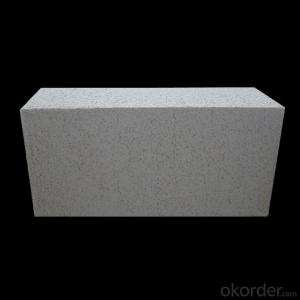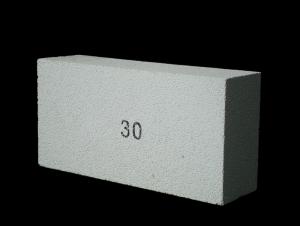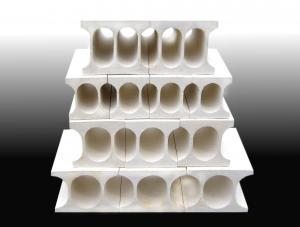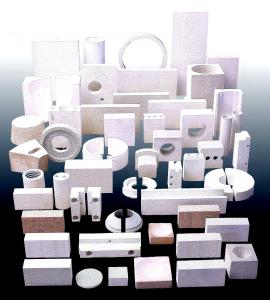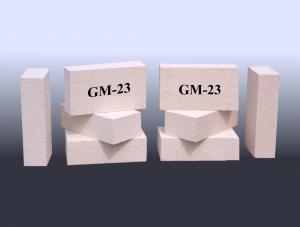Insulating Fire Brick - Mullite Insulating Brick for Furnaces and Kilns (DJM26)
- Loading Port:
- Tianjin
- Payment Terms:
- TT OR LC
- Min Order Qty:
- 2 m.t.
- Supply Capability:
- 1000 m.t./month
OKorder Service Pledge
OKorder Financial Service
You Might Also Like
Thermal Insulation Fire Clay Brick
DJM 26 Light Weight Insulating fire brickconforms strictly to the requirements of ISO 9000 quality control system during the production. MSDS is also available if you want. The thermal insulation fire clay brick meet with the requirements of ASTM & JIS standards. So please stay cool with our quality.
(1) Low density
(2) Low conductivity
(3) Great resistance to thermal shock
(4) Low linear shrinkage
(5) High contain of mullite crystal
(6) Accurate in dimension.
Application
DJM 26 Light Weight Insulating fire brick are used for the lining of converter, alternating current arc furnace, direct Current arc furnace and the ladle slag line, etc.
Company Advantage
(1)Long Insulating Fire Brick manufacture history: 25 years manufacturer
(2)Advanced equipment
(3)Diversification of production standards: ISO ANSI FEPA JIS ASTM
(4)Flexible payment: T/T L/C D/P D/A
(5)Professional marketing team and after-sale service
(6)Free sample
Equipment
1 unit of Ceramic Abrasive (SG Abrasive) pilot production line
1 unit of high-end coated abrasives (abrasive cloth) production line
2 units of Boron Carbide production lines
Q1 What’s the transport method?
A1 FCL delivery goods with wooden pallet or wooden case by sea; If LCL delivery, must with wooden case; Sometimes need open top, flat rack or bulk cargo.
Q2 What’s the required payment term?
A2 Generally 30% TT as the prepayment, 70% TT before delivery. If need, 100% Irrevocable Letter of Credit or negotiation.
Q3 Which country are our products exported to?
A3 Apart from entire Chinese market, the US, Russia, Japan, Korea, Australia and some Southeast Asian Nations.
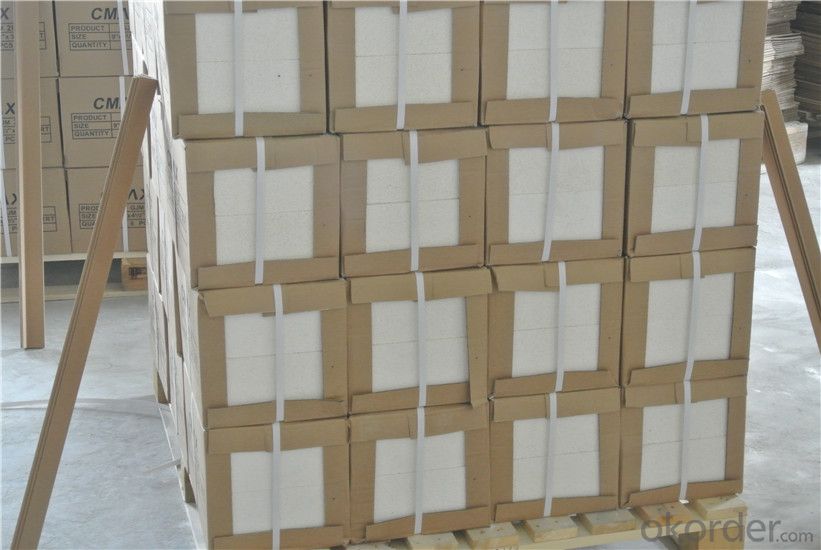
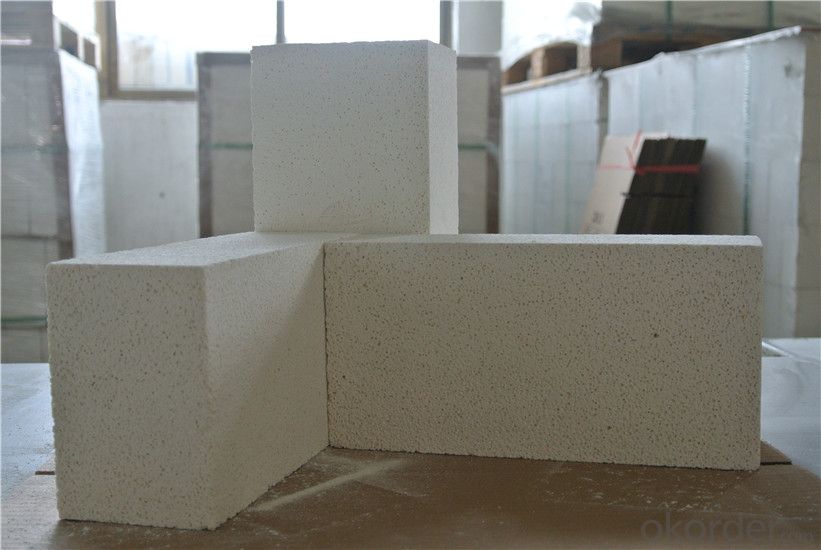
- Q: Do insulating fire bricks have a high thermal stability?
- Insulating fire bricks possess a remarkable level of thermal stability, as they are specifically engineered to endure elevated temperatures without degradation or the loss of their insulating properties. Crafted from top-notch refractory materials capable of withstanding extreme temperatures, these bricks are exceptionally well-suited for situations where thermal stability is of utmost importance. Their low thermal conductivity enables them to effectively trap and retain heat, thus preventing its escape. Consequently, they are particularly valuable in environments necessitating consistent temperatures, such as furnaces, kilns, and various high-temperature industrial processes. In summary, insulating fire bricks are renowned for their exceptional thermal stability, rendering them a dependable option for applications demanding insulation and safeguarding against high temperatures.
- Q: Do insulating fire bricks require any special curing or firing temperature profiles?
- Yes, insulating fire bricks do require special curing or firing temperature profiles. These bricks are typically made from lightweight refractory materials, which need to be slowly heated and cooled to avoid cracking or damage. The curing process involves gradually increasing the temperature over several hours and holding it at a specific level for a certain period. This allows the bricks to undergo physical and chemical changes, ensuring their optimal performance and durability in high-temperature applications.
- Q: Can insulating fire bricks be used in the construction of pottery kiln shelves?
- Yes, insulating fire bricks can be used in the construction of pottery kiln shelves. These bricks are specifically designed to withstand high temperatures, making them suitable for use in kilns. They provide excellent insulation, helping to maintain consistent heat distribution throughout the kiln and ensuring optimal firing conditions for pottery.
- Q: What is the refractoriness of insulating fire bricks?
- The refractoriness of insulating fire bricks refers to their ability to withstand high temperatures without losing their structural integrity or insulation properties.
- Q: Can insulating fire bricks be used in the construction of aluminum smelting furnaces?
- Yes, insulating fire bricks can be used in the construction of aluminum smelting furnaces. Insulating fire bricks are made from lightweight materials such as refractory clay and have high insulating properties. This makes them ideal for use in high-temperature environments, such as aluminum smelting furnaces, where they can help to conserve heat and improve energy efficiency. Aluminum smelting furnaces typically operate at very high temperatures, often above 1000 degrees Celsius. In these extreme conditions, insulating fire bricks can provide effective thermal insulation, which helps to reduce heat loss and maintain the desired temperature inside the furnace. This insulation can also help to reduce the energy required to heat the furnace, leading to cost savings and increased efficiency. Additionally, insulating fire bricks have excellent resistance to thermal shock, meaning they can withstand rapid temperature changes without cracking or breaking. This is important in an aluminum smelting furnace, where the heating and cooling cycles can be frequent and rapid. Another advantage of using insulating fire bricks in aluminum smelting furnaces is their low thermal conductivity. This property allows them to retain heat within the furnace, preventing it from escaping to the surrounding environment. By reducing heat loss, insulating fire bricks can help to maintain a consistent temperature throughout the smelting process, ensuring optimal conditions for the melting and refining of aluminum. In summary, insulating fire bricks are a suitable choice for the construction of aluminum smelting furnaces due to their high insulating properties, resistance to thermal shock, and low thermal conductivity. Their use can help to improve energy efficiency, reduce heat loss, and maintain a stable temperature within the furnace.
- Q: Are insulating fire bricks suitable for insulation in boilers?
- Yes, insulating fire bricks are suitable for insulation in boilers. Insulating fire bricks are specially designed to withstand high temperatures and provide excellent thermal insulation, making them ideal for use in boilers. They help to reduce heat loss, improve energy efficiency, and enhance the overall performance of the boiler.
- Q: Can insulating fire bricks be used in applications involving molten metal?
- Yes, insulating fire bricks can be used in applications involving molten metal. Insulating fire bricks have high heat resistance and low thermal conductivity, making them suitable for withstanding the extreme temperatures generated by molten metal. They can be used in applications such as furnaces, kilns, and foundries, providing insulation and protection against heat transfer.
- Q: Can insulating fire bricks be cut to size?
- Indeed, it is possible to alter the dimensions of insulating fire bricks. Usually composed of lightweight refractory substances like expanded clay or vermiculite, insulating fire bricks are quite manageable to cut. Saws or knives are sufficient tools for this task. It is crucial to bear in mind that precautions should be taken while cutting insulating fire bricks to ensure safety. Wearing protective goggles and a dust mask is recommended due to the potential dust and small particles generated during the cutting process. Furthermore, it is advisable to either refer to the manufacturer's instructions or seek professional guidance to guarantee the correct technique and tools are employed for cutting insulating fire bricks.
- Q: Can insulating fire bricks be used in low-temperature applications as well?
- In low-temperature scenarios, insulating fire bricks can be utilized to minimize heat loss and maintain a consistent temperature. They are suitable for insulating walls, floors, and roofs of structures or equipment that require temperature regulation, such as cold storage facilities, refrigerators, or freezers. In addition, insulating fire bricks are commonly employed in low-temperature furnaces and kilns to reduce energy consumption and maintain a steady temperature during the heating process. Their exceptional insulation properties ensure that the heat generated within the furnace or kiln remains contained, reducing heat loss and enhancing overall energy efficiency. Moreover, insulating fire bricks are lightweight and easy to handle, making them convenient for various low-temperature applications. They are also resistant to thermal shock and provide outstanding structural stability, guaranteeing long-lasting performance even in demanding environments. Overall, insulating fire bricks can be effectively utilized in low-temperature applications to improve energy efficiency, temperature control, and structural stability.
- Q: Are insulating fire bricks chemically resistant?
- Insulating fire bricks are generally chemically resistant to a wide range of substances. These bricks are typically made from high-quality refractory materials such as alumina, silica, or a combination of both. These materials have excellent resistance to chemical attack, making insulating fire bricks highly resistant to the corrosive effects of various chemicals. However, it is important to note that the chemical resistance of insulating fire bricks can vary depending on the specific composition and manufacturing process. While they are generally resistant to most chemicals, there may be certain aggressive chemicals or extreme conditions that could potentially degrade or erode the bricks over time. To ensure the optimal chemical resistance of insulating fire bricks, it is recommended to consult the manufacturer's specifications or seek expert advice for specific applications. This will help ensure that the bricks are suitable for the intended chemical environment and will perform reliably over the desired lifespan.
Send your message to us
Insulating Fire Brick - Mullite Insulating Brick for Furnaces and Kilns (DJM26)
- Loading Port:
- Tianjin
- Payment Terms:
- TT OR LC
- Min Order Qty:
- 2 m.t.
- Supply Capability:
- 1000 m.t./month
OKorder Service Pledge
OKorder Financial Service
Similar products
Hot products
Hot Searches
Related keywords
